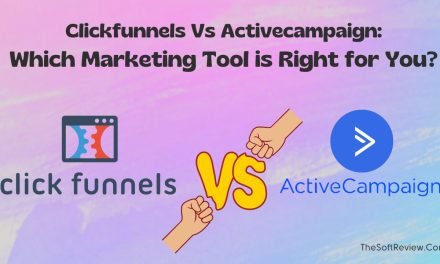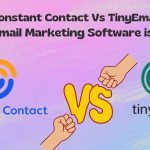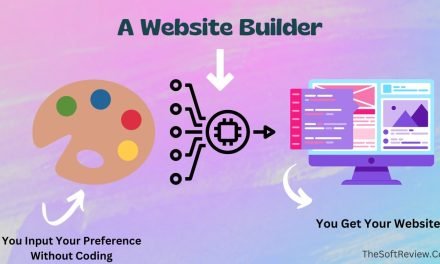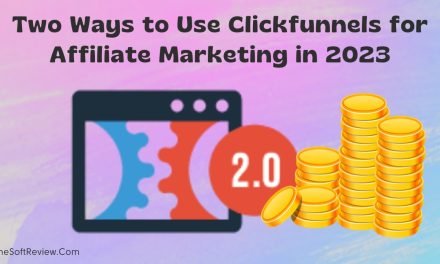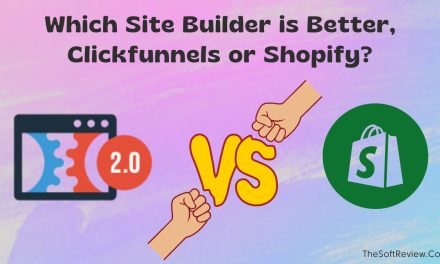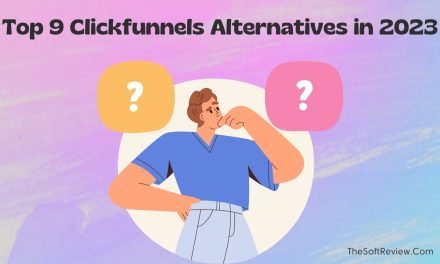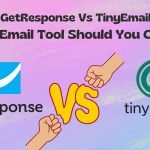
Mastering SEO on Clickfunnels: Secrets of Looming on SERPs

Search Engine Optimization (SEO) has undergone significant changes over the years, making the old-school keyword stuffing and link spamming methods ineffective.
So, if you use Clickfunnels to create sales funnels, landing pages, or even websites, you better know how to optimize your SEO on Clickfunnels and use assets in the updated way; otherwise, you may need to spend tons of money to get traffic.
But don’t stress if SEO on Clickfunnels is new to you! In this blog post, we will explore how you can optimize your ClickFunnels assets and increase the chance of ranking on the first page.
SEO on Clickfunnels: A Beginner Guide to Increase Your Organic Traffic
Both SEO and Clickfunnels got massive updates. Clickfunnels released its version 2.0 with a new website builder, CRM, email marketing tool, etc.
Search engine optimization becomes more focused on helping users with the most relevant and valuable results for their search queries.
So, you must deliver high-quality content that answers users’ queries, solves their problems, and provides a satisfying user experience. We can ensure that for our Clickfunnels assets by following the three steps:
- Creating a Solid Content Plan
- Crafting High-Quality Content
- Optimizing Content for Search Engines (On-Page and Technical SEO)
Step 1. Create a Solid Content Plan:
First, we need to create a solid content plan so that we can help our readers and eventually rank higher in search engine results pages.
For this example, imagine you want to use Clickfunnels blog (with sales funnel) to gain organic traffic and transfer them to your funnel page to make a sale.
Let’s delve into how you can create a solid content plan.
A. Topic Analysis:
The first thing in creating a solid content plan is understanding your reader’s pain points. For instance, if your product is a weight-gaining tonic, you have to research and identify the key problems of skinny people, their interests, and any other trending topics related to your niche.
You can use tools like Google Trends, SEMrush, or social media platforms to gather insights and know your target audience before selling them your product.
For instance, go to Google Trends, select your area and search for the topic, “How to Gain Weight“, and see what else people search for the term.
Now keep researching until you find a few topics related to your product.
B. Find Relevant Keywords:
Once you have identified the topics, delve deeper into keyword research and find what people search online around your selected topics. For instance, people who want to gain weight want to know “How to Gain Weight with Diabetes“!
You can find more relevant keywords around your topic using a keyword research tool like Semrush, Ahrefs, or even the keyword planner by Google AdWords.
Ensure you look for keywords that align with your topic, have a reasonable search volume, and have low to medium competition.
You can focus on long-tail keywords with high CPC rates, which tend to have higher conversion rates. Here is a keyword research guide for a better idea.
C. Creating a Content Map:
Once you have researched and selected a list of keywords, it is time to create a topic cluster that starts with addressing your reader’s problem and ends with converting them into potential customers.
In this stage, you have to consider the hierarchy of topics and create an interlinking map that a reader will follow through to land on your funnel page.
For instance, you can make a map that links the article on “How to Gain Weight with Diabetes” to a number of other articles and health tips, such as “What is Type 2 Diabetes,” and then to the funnel page you made to sell your product for weight gain.
Step 2. Create High-Quality Content:
Once you have a content plan, it’s time to produce helpful content for both your blog and sales funnel:
A. Ensure Originality:
Strive to create unique and original content that provides fresh insights and distinguishes your website from competitors. Offer a unique perspective, conduct original research, or present information in a new and engaging way.
B. Maintain good Readability:
Write in a clear, concise, and easily understandable manner. Break your content into sections using subheadings to improve readability. Use bullet points, numbered lists, and short paragraphs to make your content scannable and digestible.
C. Add Engaging Multimedia:
Incorporate relevant images, videos, infographics, and other visual elements to enhance your content’s overall appeal and engagement. Visual content captivates readers and improves the likelihood of social sharing and getting quality backlinks (off-page SEO).
Step 3. Optimize Your Content for Search Engines (On-Page and Off-Page):
After creating content for your blog and sales page, it is time to optimize the on-page and technical SEO factors to make them SEO friendly.
A. Critical On-Page SEO Factors for Clickfunnels:
- Use Heading Tags Appropriately: Properly using heading tags helps search engines understand the structure of your content and improves user experience. When writing blog posts, structure your content using heading tags (H1, H2, H3, etc.) to indicate the hierarchy and organization of information. Start with the main heading (H1) and include your primary keyword naturally within it. Use subheadings (H2, H3) for supporting keywords or related topics.
- Craft Compelling Title Tag and Meta Description: Title tags and meta descriptions are crucial in enticing users to click on your ClickFunnels pages in search engine results. Craft a compelling, concise page title (up to 60 characters) and meta description (around 150-160 characters). Include your target keywords naturally for individual pages while making them appealing to users. In ClickFunnels, you can easily edit SEO meta data from each page’s setting.
- Maintain a Healthy URL Structure: Ensure your URLs are descriptive, user-friendly, and reflect the content of each page. Use hyphens to separate words and make your URLs easy to read and understand. For example, instead of “www.example.com/page1?id=123,” opt for “www.example.com/your-topic-name.” In ClickFunnels, you can customize the URLs by accessing the page settings.
- Image Optimization: Optimizing images on your ClickFunnels pages provides additional information to search engines. Add relevant “alt text,” descriptive file names, and captions to enhance search engine understanding. With ClickFunnels, you can upload and optimize images by selecting the image element and modifying settings such as alt text and file name.
B. Key Technical SEO Factors for Clickfunnels:
- Page Speed Optimization and Mobile Friendliness: Page speed and responsive design are critical ranking factors. Though the new Clickfunnels 2.0 offers faster hosting and responsive templates, you may need to optimize your ClickFunnels assets for quick loading times. To improve the page speed first, compress the image files, remove any unnecessary design elements from your page, and check the page speed using Google Page Speed Checker. If you still find the page speed unsatisfactory for desktop or mobile devices, use third-party tools like “Website Speedy” to improve your page speed.
- Easy Navigation: While creating your web pages, ensure a user-friendly navigation structure for your ClickFunnels pages so that users can easily navigate your content and find what they’re looking for without confusion “such as the checkout button”.
- SSL Certificate: Secure Sockets Layer (SSL) certificates are essential for website security and trust as they ensure the encryption of HyperText Transfer Protocol (HTTPS). Clickfunnels offers free SSL certificates, so make sure your ClickFunnels assets have an SSL certificate activated. To activate your SSL certificate, go to your domain page and click on the three dots beside your domain; now, it will open a new page where you can send a request to activate your SSL.
- Structured Data Markup: Implement structured data markup on your ClickFunnels assets to provide search engines with additional information about your content. Utilize schema.org or other markup generators to highlight essential details such as product information, reviews, events, or frequently asked questions (FAQs). That’s all for now; following the guides can help you master the basics of SEO on Clickfunnels. Let’s finish this discussion with four practical tips for long-term benefits.
Four Tips to Increase Your Clickfunnels SEO Performance:
1. Use Your Own Domain Name
Clickfunnels give you a free subdomain when you register. However, using your domain name can positively impact your Clickfunnels SEO as search engines prioritize websites with custom domain names.
Additionally, it gives you more control over your website’s SEO elements, such as the domain age, backlinks, and a custom domain name looks more professional while helping you establish your brand identity.
2. Monitor Your SEO Results
Monitoring your SEO performance is crucial to understanding what’s working and needs improvement. You can use tools like Google Analytics and Google Search Console to track your website’s organic search engine traffic, keyword rankings, click-through rate, and other relevant metrics.
3. Diversify Your Traffic Source
Diversifying your traffic source will help you in the long run, so index your assets on other search engines, use social media marketing, email marketing, influencer marketing and other ways to drive traffic. You can also do paid advertising if needed.
4. Keep Learning
SEO is an ever-evolving field, with search engines frequently updating their algorithms. To stay ahead of the competition and improve your ClickFunnels SEO performance, it’s essential to keep learning.
Staying updated with the latest Clickfunnels 2.0 features, industry trends, and algorithm changes would be best. Follow reputable SEO blogs like Search Engine Journals, join Clickfunnels’ official Facebook group, and consider investing in SEO courses to learn more.
Finally, contact a Clickfunnels agent if you need any help while implementing what you have learned from this blog post.
Final Words
Search engines now prioritize user experience, relevance, and high-quality content. So, if you use Clickfunnels, following the latest Clickfunnels SEO Practices mentioned in this discussion would help you secure your positions on search results.
All you need to create a solid content plan, produce high-quality content, and make them SEO friendly. With the right Clickfunnels SEO Strategy and marketing efforts, you will be able to increase online visibility and drive more traffic.





